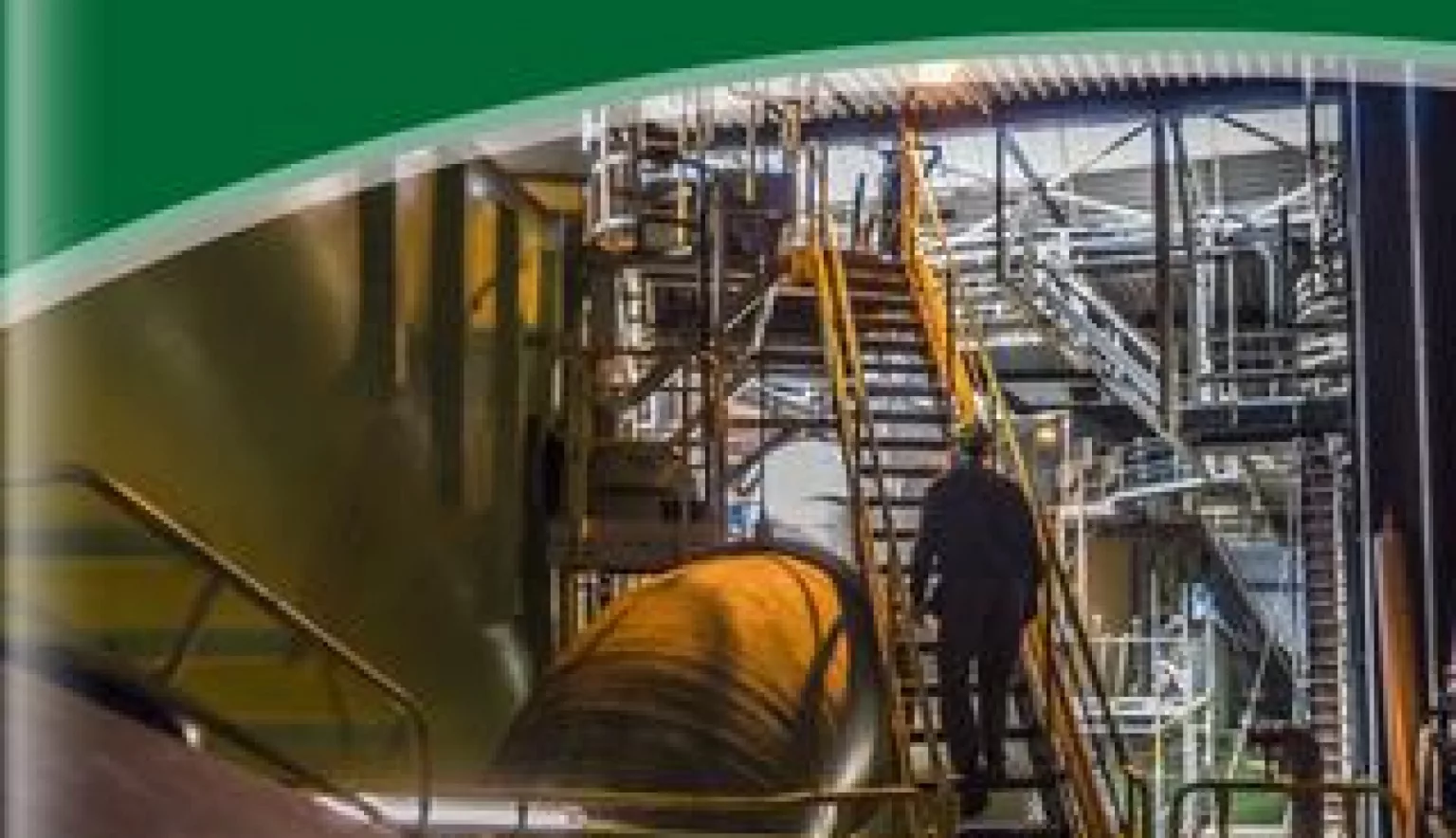The responsibility for Vestforbrænding as Denmark’s leading waste management company is being bet by an unwavering commitment to social enrichment and engagement.
THE VALUE OF WASTE
Vestforbrænding is uniting 19 Danish municipalities towards a common goal of energy efficiency and sustainable living as the market-leading waste management company continues to foster a harmonious “environmental circle”.
This circle begins in each household as residents are encouraged to sort their waste in the most suitable and conducive manner; is then put through the innovative and complex Vestforbrænding filter of energy production and distribution; before being pumped back into the same originating homes in the form of optimally efficient power.
Founded in 1970 on a non-profit-cost-coverage principle, the Company has evolved according to this ideology ever since; diversifying its remit over the years to now comprise three core business areas in the form of waste management and recycling, waste-to-energy production, and energy distribution.
Having joined the business nearly four years ago, Chief Executive Officer, Peter Basland was and is still aware of the potential that Vestforbrænding has to enrich such a wide area, across and surrounding the area of Copenhagen.
“When I arrived at the largest, well-reputed waste-management and energy company in Denmark, I was pleased to get the chance to add to its ambitious and ‘think big’ ethos,” he says. “Our main objectives revolve around efficiency, curiosity and responsibility rather than solely profit. This encourages us to continue to be at the forefront of new developments and we are consistently anchoring our position as industry leaders. Furthermore, it reinforces our obligation to our owners – the 19 municipalities as well as the individual consumers of each municipality.”
Solutions comprise recycling centres and schemes as well as a selection of energy production and distribution options. And this flexible and dynamic capacity means Vestforbrænding is able to tailor different aspects to suit the specific needs of each community. As Denmark’s largest waste management and waste-to-energy company, it administers one million tonnes of waste and comes into contact with 25 percent of all household waste generated in the country.
“Of that waste, 62 percent is sorted for recycling, with less than one percent going to landfills, and the rest utilised for harvesting energy through incineration, from which 65 percent is allocated to our own district heating network,” Basland explains. “Vestforbrænding is also Northern Europe’s largest supplier of waste-based district heating and supplies 64,300 homes with district heating and 168,000 consumers with electricity.”
THE ENVIRONMENTAL CIRCLE
Facilitating this level of coverage in the present day, Vestforbrænding is focusing on two core areas: addressing increasingly stringent areas of transparency, governance and compliance that come with a publicly owned company; and emphasising the Company’s unique value chain proposition.
However, if you rewind the clock to the 70s, the outlook was a whole lot different, as Basland states: “Generally waste was viewed as a problem rather than an inherently valuable resource, and our approach now is much more enlightened.
“We have become increasingly focused on creating solutions that reflect our commitment to the environment by returning recycled material to the product circuit and effectively recovering green energy from the residual waste.”
As such, recycling is the order of the day, and it begins at home, with users provided waste collection systems that allow them to source separate household waste into different recyclable categories; paving the way for the Company’s more technical solutions to operate at an optimum level.
“Vestforbrænding’s evolution as a waste management and energy production company has very much been guided by our desire to elevate our environmental consideration in all aspects of our endeavours,” Basland continues. “We challenge ourselves regularly by asking how we can improve each step of the process in our value chain to be as environmentally-friendly as possible.
“In our nearly 50 years of existence, we have accomplished a range of goals that secure a circular business model and thus a harmonious balance with our surroundings.”
This circular approach alludes to perhaps the Company’s greatest strength – its structure. Basland emphasises the strong levels of technical capability throughout every strand of the process, but it is Vestforbrænding’s organisation and set-up which lends so perfectly to a cross-municipality influence.
He elaborates: “We’re integrated into the 19 municipalities. Our success is securing the valuable resources and making sure they’re recycled, but by engaging citizens in the process. They understand the importance of sorting their waste in the right ways. So each individual household is where the story begins.
“Then we have a professional approach to putting the resources back into the environmental circle. What doesn’t get recycled, goes back to our energy facility in the middle of this huge area that we cover. And we then distribute waste energy back to the same kitchen where the waste started its journey.”
MEETING DEMAND ALL YEAR ROUND
Delving more intricately into Vestforbrænding’s technical expertise, the ability to not just react to trends, but keep ahead of them, has been a critical factor in the Company’s success over the decades. Recently such trends have included improved collection and management techniques en route to the recycling stage; again initiated not directly, but by encouraging each user to assist with the process and learn about its importance themselves.
“Then, in our own facilities, the implementation of our new robot-automated sorting system makes the sorting of bulky household waste even more efficient,” Basland picks up. “This system enables us to fine-comb bulky waste, ensuring that all materials suitable for recycling are done so before being sent for incineration.
“A further project that stands out includes a continuous focus on ‘bottom ash’ which are the remnants of the incineration process. By sorting recyclable metals and upgrading the residual material for use in construction of new roads, they are put to good use.”
Additionally, the Company is addressing how it handles ‘fly-ash’, the filtered by-product of the flue gas cleaning systems; once again ensuring that the amount of waste for landfills is kept to a minimum.
“The final trend or challenge we have to mitigate then comes from the difference in demography across our different areas of operation,” Basland adds. “Some live in flats in built-up areas, while others live in villas in more dilute municipalities, and we have to effectively serve each.
“This is where our flexibility and our diverse solutions come into play. While automation plays a part, so too does the expansion of our district heating network, where we are looking into the potential of district cooling in collaboration with industrial partners.”
Harnessing geothermal energy is also a potential for the future – hot water that can be pulled out of the ground and used as a renewable energy source. This is a trend which also alleviates one of the country’s biggest, and most unavoidable, challenges from an energy perspective.
“There is a massive difference between winter and summer here,” Basland reveals. “To balance production and meet demand all year round, we’re looking into storage of energy during the summer months where demand is not as high, and then meeting demands in the winter where it is.
“To combat this, we plan on investing in groundwater storage so that we can still produce lots in the summer, but then store it until the winter where demand is at its highest.”
A WORLD-CLASS PROCESS
Local ingratiation has been achieved both inside and outside of Vestforbrænding’s confines; evident initially across the Company’s valued and knowledgeable workforce, and equally across all aforementioned residents of the Company’s 19 municipalities.
For the latter, an educational centre authentically located in the heart of Vestforbrænding has been set up to foster the next generation of resource and energy-conscientious citizens; inviting children of all ages into this dynamic and interactive learning environment giving them the opportunity to learn the importance of recycling and – as they get older – the more sophisticated processes that drive sustainable society.
“More than 22,000 students came to our facility last year and it’s a great way of engaging future consumers who will hopefully support us as their favourite waste management and energy provider,” Basland states. “Our established presence in the field of waste management relates not just to our solid financial position, but to this dedication to investing in the future, and our rich history as an environmentally considerate company.”
Vestforbrænding is proud to be part of such a fundamentally important industry and is privileged to be influencing the industry, and society for the better. Across each strand of the Company’s unique value chain – from waste collection to recycling, energy production and distribution – the end goal of returning a highly valuable resource to the originating dwellings continues to be realised.
“It all goes back to us being an integral part of the municipalities we cater, embracing the municipalities and demonstrating the unique features of Vestforbrænding’s value chain that contributes to a sustainable society,” Basland concludes. “In the future we would like to strengthen this value chain further through strategic investments across the three segments. Our waste management operations will remain well ahead of EU targets, driven by new approaches including bio treatment of food waste; geothermal processes will bring a new dynamic to our energy production; and with energy distribution, our district heating and district cooling networks, compounded by our groundwater storage solution, will innovate the process even further.
“Ultimately, this will all ensure that we remain unique and forward-thinking, all the while engaging citizens so they can understand and help drive these efforts.”


































